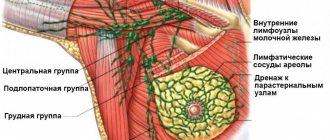Granulosa cell tumor of the ovaries is a heterogeneous group of neoplasms, including germ cell, epithelial and cord stromal tumors that form in the gonads. Infecting granulosa cells play a large role in the proliferation of cancer particles. The cells that are the main cause of the development of the disease can be benign for a long time, however, during ontogenesis, progression into a malignant tumor is possible. The growth of teratoma occurs gradually. Localization has been going on for a long time. But subsequently, in the absence of timely diagnosis and treatment, metastases spread to nearby organs. The inflammatory process is unpredictable, but such consequences most often occur only at a late stage.
Peculiarities
According to research results, it was revealed that teratoma, which arose due to an increase in granulosa, occurs only in 1-2% of patients and in 8% of patients they become malignant. It can appear in two age periods:
- in postmenopausal;
- in prepuberty.
Thus, granulosa cell tumor of the first type is observed in 60% of patients, and in the second type, only in 5%. Depending on the age at which inflammation began, clinical and morphological manifestations have their own characteristics. Due to age differences, the disease is divided into two types.
- Juvenile.
- Adult.
The difference between this deviation lies in its ability to secrete estrogens (sex steroid hormones) and inhibin (glycoprotein hormone), which are used in medicine as tumor markers. Since the gland has a pronounced dependence on hormonal levels, this affects clinical indicators and hormone therapy.
The adult type has an encapsulated appearance and is observed in 95% of cases. The size of the tumor reaches 13 centimeters. It has a lobed and smooth surface. The structure in cross-section is a solid cystic formation of yellow-brown or gray-yellow color. Foci of necrosis and hemorrhage can be found in the insides. This picture is typical for this disease, which makes the work of specialists easier.
Teratoma includes five subtypes, differing in morphological characteristics. The most common type is the microfollicular subtype, which is characterized by the presence of Call-Exner bodies and the formation of coffee bean-shaped compactions. Almost always only one organ is affected. The most rare tumor is found with a complete cystic structure.
The juvenile type has luteinization features and a lobular structure. With it, Call-Exner bodies are detected much less frequently. It develops most often in adolescents, during puberty. The juvenile type very rarely develops into cancer.
Granulosa cell tumor of the ovary: causes, prognosis - An intimate question
Granulosa cell tumors of the ovaries are the most common of the entire list of possible neoplasms that can form from cells located in the reproductive organs of women. More often, this disease is detected in women over forty years of age.
Sometimes it can occur at a younger age, for example, during puberty. This is due to the fact that hormonal activity increases significantly at this time.
Signs of this disease may include disturbances in the female cycle, frequent bleeding or pain in the abdominal area.
Granulosa cell tumor of the ovary
Granulosa cell tumor of the ovary
- a malignant hormonally active ovarian neoplasm originating from granular cells of the organ stroma.
It manifests itself as early puberty in girls, menometrorrhagia and acyclic bleeding in women of reproductive age, and bloody vaginal discharge in postmenopause.
To make a diagnosis, ultrasound of the pelvic organs, determination of the levels of inhibins and Müller inhibitory substance, and histological examination of the biopsy specimen are used. Treatment is combined with removal of the affected appendages or hysterectomy with resection of the omentum, and, if necessary, radiation and polychemotherapy.
The key features of granulosa cell ovarian tumors (GCCT, folliculoma, granulosa epithelioma, granulosa cell or folliculoid cancer, cast, feminizing ovarian mesenchiomas) are the early appearance of clinical symptoms in more than 65-75% of cases of the disease, low progression and low risk of distant metastases.
Neoplasia is usually unilateral. According to observational results, such tumors account for from 0.6 to 7.5% of ovarian tumors.
The adult form of the pathology is most often detected in women 40-60 years old, the juvenile form - in girls under 10 years old.
Although neoplasias of this type are of mesenchymal origin, they are epithelial in structure, which affects the stages of their development.
Granulosa cell tumor of the ovary
The etiology of the disease has not been definitively established. The neoplastic process presumably occurs in women who have a genetic defect. In 97% of patients with the late (adult) form of the tumor and in 10% of patients with the juvenile variant, the same mutation in the FOXP2 gene is detected.
A connection has also been identified between the early type of granulosa cell neoplasia of the ovaries and a number of hereditary syndromes that are observed with abnormalities in the 12th and 22nd autosomes. Perhaps such a DNA disorder manifests itself during the first half of pregnancy, when ovarian tissue is formed, and tumor growth itself begins later under the influence of provoking factors.
Source: https://mjk1.ru/zabolevaniya/opuhol-granulezokletochnaya-yaichnika-prichiny-prognoz.html
Clinic
Most tumors can be diagnosed at an early stage. Since the glands are very dependent on hormones, and especially on estrogens, identifying it is not so difficult. The main symptoms are:
- menstruation disorders;
- amenorrhea;
- postmenopausal bleeding;
- acyclic bleeding.
Thanks to obvious symptoms and diagnosis, the presence of abnormalities at the first stage is detected in almost 66% of patients who contact a medical institution with complaints. An endometrial biopsy is added to the specialist’s examination.
Symptoms
The juvenile form of TGCT manifests itself:
- Premature puberty (appearance of armpit and pubic hair, breast enlargement).
- Copious discharge of blood during menstruation.
- Early onset of menstruation.
Important! In girls of childbearing age, the juvenile form of granulosa cell tumor of the ovary also occurs.
The phenomenon is rare, and it is characterized by menstrual irregularities and discharge of blood mixed with mucus.
Mature women suffer from the following manifestations of folliculoma:
- Menstrual irregularities.
- Stopping menstruation.
- Resumption of menstruation in postmenopause.
- Swelling and tenderness of the mammary glands.
- Mucous discharge from the vagina.
- Hirsutism is the growth of facial hair.
Diagnostics
The manifestation of indicators of abnormal activity of the reproductive system directly depends on the age of the patient and what her reproductive status is. Since these glands produce steroid hormones, in adolescents during puberty the symptoms may not be as obvious as in older women. Also, many girls experience puberty in a short time due to hormonal imbalances.
The main sign of postmenopausal abnormalities is considered to be irregular and painful sensations during the menstrual cycle. So, if a disorder was found in a girl who has not reached this state, then the main indicator is irregular uterine bleeding. If the disease is not diagnosed in time and is not exposed to drugs and therapy, the disease will progress much faster.
Subsequently there are:
- heaviness and pain in the lower abdomen;
- increase in belly size.
If these signs are detected, it becomes clear that the disease becomes more complex, and this threatens an unfavorable prognosis. In the absence of any measures, the complication can develop into cancer.
Granulosa cell tumor of the ovary is determined by diagnosis; this is the best method to confirm or refute the diagnosis.
The examination consists of undergoing a number of procedures:
- medical examination;
- clinical tests;
- Ultrasound;
- MRI;
- testing for tumor markers.
Based on the research results, the size of tumor formations is determined, which can reach a length of up to 30 cm and a diameter of up to 13 cm. The presence of cysts and metastases is detected, including their number and size. Also, by analyzing cancer markers, the doctor confirms whether they are benign or malignant.
The amount of estradiol in the blood becomes almost the most obvious indicator of the presence of a deviation, since it is it that regulates the reproductive system. If a decrease in estradiol occurs, this indicates differentiation of tumor formation and progression of the disease.
Granulosa cell tumor of the ovary: is it cancer or not – Gynecologist
- Granulosa cell tumor of the ovary - treatment, is it cancer or not?
- Granulosa cell tumor of the ovary, types of neoplasm and developmental features
- Granulosa cell tumor: description, symptoms, treatment Characteristics
- Kinds
- Causes
- Symptoms
- Therapy
- What types of tumors are there?
- Varieties
My niece was diagnosed with a granulosa cell tumor of the ovary. My sister is panicking. I studied everything about this pathology, told her, and now I will share my knowledge with you.
- 4 Reasons for the occurrence of such neoplasms
- 5 Types of granulosa cell tumors
- 6 Diagnosis of the disease 6.1 Differential diagnosis
- 7.1 Operation
Prognosis for granulosa cell tumor of the ovary
Treatment of the problem gives a favorable prognosis when an accurate diagnosis is made in a timely manner, surgery is performed and then adequate therapy is performed.
When visiting a gynecologist late, the disease manifests itself as complications:
- anemia due to constant bleeding,
- probability of capsule rupture,
- hormonal disorders,
- malignancy of the tumor.
A malignant neoplasm can cause death.
Operation
Since the main treatment option is surgical, much depends on the phase and size of the formation, the phase of its malignancy, and the presence of metastases. The age of the patient and the presence of other pathologies are important. Nowadays, minimally invasive laparoscopic surgeries are common. They are safe and help prevent complications.
Whenever possible, doctors try to preserve the appendages. The final decision is made during the intervention, taking into account all the associated factors.
Radiation and chemotherapy
To defeat metastases and completely eliminate the possibility of relapses, a woman is recommended to undergo a course of radiation. Similar treatment is also used when chemotherapy is contraindicated. It is radiation treatment that significantly improves the favorable prognosis.
Chemotherapy is also recognized as an option to complement radical surgery. Such procedures are carried out before and after surgery. Usually 3 courses are recommended, prescribed every 3 weeks. The following drugs are used:
- Carboplatin and Etoposide,
- Taxol and Bleomycin,
- Cisplatin.
All of them help to reduce the size of neoplastic formations.
Treatment
Granulosa cell tumor of the ovary is treated only with surgery. The main method of elimination is to remove the tumor and its processes.
Treatment methods:
- surgical intervention;
- medicinal method;
- hormone therapy;
- chemotherapy;
- radiation therapy.
Surgical intervention
How difficult the operation will be depends on all the characteristics of the disease, and the age category is also of great importance. If the patient is a girl who is in puberty, then surgeons strive to preserve her gonads so that it is possible to restore the reproductive function of the body.
Medication method
If we talk about the medication method, doctors have come to a single list of drugs that should be used in preparation for surgery and after it. During chemotherapy, an individual approach is taken to this list.
Medicines prescribed by a specialist contain:
- platinum derivatives;
- bleocin;
- etoposide;
- vinblastine;
- taxanes;
- doxorubicin.
Prognosis for granulosa cell tumor of the ovary
My niece was diagnosed with a granulosa cell tumor of the ovary. My sister is panicking. I studied everything about this pathology, told her, and now I will share my knowledge with you.
What is granulosa cell tumor of the ovary
The formation is often benign, although there is a tendency towards oncology, which is manifested by relapses, metastases and capsule germination. The disease can return after healing after many years.
Treatment of the problem gives a favorable prognosis when an accurate diagnosis is made in a timely manner, surgery is performed and then adequate therapy is performed.
When visiting a gynecologist late, the disease manifests itself as complications:
- anemia due to constant bleeding;
- the likelihood of capsule rupture;
- hormonal disorders;
- malignancy of the tumor.
A malignant neoplasm can cause death.
How does the disease manifest itself?
Signs of the presence of formation are somewhat different. It all depends on the type of tumor. Most often the manifestations are nonspecific:
- the peritoneum is swollen;
- There is moderate pain felt in the groin or lower back.
Sometimes the capsule ruptures, causing internal bleeding. After this, blood accumulates in the peritoneum. Such women are urgently sent to surgery. Common symptoms of education can include poor health, anemia, and constant weakness.
Juvenile version of GKO
A significant part of such tumors are hormonally active:
- When producing estrogen, juvenile GCTs provoke premature puberty, mammary glands grow, and hair covers the armpits and pubic area. In late adolescence, the menstrual cycle is disrupted, bleeding often occurs, and thyroid hyperplasia is possible.
- Increased production by the formation of inhibin or progesterone during childbearing age is manifested by dysfunction of the female cycle, sometimes menstruation stops completely.
- Androgen-producing formations provoke the appearance of virile syndrome: girls stop menstruating, they become masculine. Hair begins to grow in places common to men, the hair on the head thins, and the voice becomes rough.
Approximately 10% of granulosa cell tumors of this type of development are diagnosed during pregnancy.
The reasons for the occurrence of such neoplasms
The main provocateur of the appearance of tumors is malfunctioning of organs that change hormonal levels. Usually the process does not begin with dysfunction of the appendages themselves - the problem develops in the pituitary gland of the brain, which regulates the synthesis of estrogen, as well as progesterone in the gonads of women.
Types of granulosa cell tumors
As I already indicated, granulosa cell tumors develop in two types: adult and juvenile. Due to such formations, ovarian cancer can develop at any period of a woman’s growing up. It is most often diagnosed after 40 years of age, with the peak incidence being detected at the age of 50–55 years.
Differential diagnosis
It is extremely important to differentiate granulosa cell tumor from adnexal oncology, carcinoid, adenocarcinoma, as well as adnexal thecomatosis or a syndrome called Stein-Leventhal. Each of these diseases differs in its prognosis and has individual therapeutic approaches.
Treatment of granulosa cell tumors
To defeat the pathology, surgery, radiation or chemotherapy, and endocrine treatment are required. For each specific situation, the doctor develops a personal treatment strategy.
Source: https://endometriy.com/yaichniki/granulezokletochnaya-opuhol
Methods of therapy
Hormone therapy occupies a special place in the rehabilitation process. It is carried out on the basis of taking megestrol and agonists. This method leads to a decrease in the activity of cells that cause the growth of tumor formations. Suspension of progression promotes cell regeneration and restoration of the general condition of the body.
If a granulosa cell tumor of the ovary was diagnosed at the first stage, then the entire treatment process consists only of removal. In the event that GCT has developed more strongly, the metastases are destroyed with the help of chemotherapy. However, doctors do not give any prediction of the results, since this procedure has an individual effect on each organism.
A method such as radiation therapy is used only in the most difficult situations, when there is a relapse and the presence of metastases, or chemotherapy is contraindicated.
Causes
It is believed that the cause of the development of granulosastromal tumor of the ovary is hormonal imbalance, disruption of the pituitary gland, and granulosa of the primordial ovarian follicles becomes the focus of tumor development. Also, the cause of the development of the tumor is considered to be a hereditary predisposition; researchers have associated the development of a juvenile tumor with abnormalities of chromosomes 12 and 22. Adult granulosa cell tumor occurs due to hormonal dysfunction of the pituitary gland. The diffuse version of the adult tumor is characterized by random cell growth; with the trabecular type, the tumor appears in the form of long strands, with the moiré and gyriform type of the tumor in the form of rhythmic figures, with the insular type in the form of islands. Macrofollicular types of granulosa cell tumors have cavities filled with blood, serous or mucinous contents.
The luteinized type of tumor is characterized by a diffuse arrangement of groups of cells. Granulosa cell tumors of the ovaries are most often found in the premenopausal and postmenopausal periods. During these periods, hormonal changes occur in a woman’s body, often accompanied by somatic and endocrine diseases. A manifestation of estrogen-active granulosa cell tumor is postmenopausal bleeding. An important role in a positive prognosis is played by early detection of the tumor, determination of the type and degree of differentiation of the tumor.
An adult tumor has a high, intermediate and low degree of differentiation; in the juvenile type of tumor, the degree of differentiation is not detected in most cases. Treatment tactics for histological variants of granulosa cell tumors differ significantly. It is very difficult to predict the development of early and almost impossible to predict the development of late relapses of tumors. Adult granulosa cell tumor can spread beyond the ovaries, but its recurrence most often occurs in the pelvis, in most cases after 5 years or more.
Forecast
Tumor formations on the female reproductive glands that grow from granulosa cells do not have a clear prognosis, since relapse is possible, even after thirty years. Such complications occur in almost 50% of people who have undergone rehabilitation. Those who have had their reproductive organs preserved are at greater risk. For this reason, during the operation, the surgeon must take into account the prognosis of the further functionality of the organ and the possibility of relapse. To see the most accurate picture, a specialist needs to be guided by prognostic factors.
These include:
- stage;
- possible presence of metastases;
- size;
- patient's age.
Since this type of disease has not been fully studied, doctors are therefore not yet able to give a clear prognosis of the behavior of the organ that has undergone surgical intervention.
Based on the results of long-term observation of patients at the time of surgery and some time after it, it turned out that the functionality of the ovaries (with the exception of their reproductive function) plays absolutely no role in the prognosis of the recurrence of the disorder.
The main factors that can trigger re-development are:
- if inflammation has spread beyond the capsule.
- number of metastases;
- expression of mutated genes and antigens.
A favorable prognosis is given if:
- the disease was diagnosed at the first stage;
- only one side is affected;
- there is a minimal number of metastases;
- there are no foci of inflammation;
- hormonal levels meet the requirements.
Recommendations
Despite the fact that medical specialists today do not give an accurate prognosis of the results of treatment, you should definitely agree to the operation. It is also necessary to understand that regular examination and attention to your health can help you avoid negative consequences. Since only if the disease is diagnosed at the first stage, the patient has a greater chance of a positive prognosis. A timely visit to a medical facility can make it possible to prevent a relapse. Therefore, at the first symptoms, you must seek qualified help.









